Common holly identification and control
About this weed
Common holly (with the exception of commercially grown holly) is a non-regulated Class C noxious weed. This means due to how widespread it is, property owners are not required to control this species on their property, though it is always encouraged.
Common holly is known as Ilex aquifolium, it is in the holly family.

Why it's a problem
Common holly is reported as naturalized in Washington, Oregon, California, and Hawaii. Here in Washington, common holly is mostly limited to western counties.
Common holly is a small tree or tree-like shrub that acts more like an understory plant in Washington. It does not grow as tall as our trees, but it grows tall enough to shade out native understory vegetation. It also stops or slows down the growth of surrounding vegetation, including trees, although the way it does that is still being studied. Common holly is also highly flammable and may increase the risk of a forest fire.
Due to the problems caused when it escapes, we recommend controlling common holly on your property, especially if you live near any natural areas or forests.
Plant description
Common holly is a large, dense, slow-growing evergreen tree or shrub that can reach 15 to 50 feet tall and up to 15 feet wide or more. It can grow either as a single-trunk tree or a multi-stemmed thicket.
Leaves are thick, glossy, dark green, and wavy. Leaves usually have sharp spines along the edges, but they might be smooth on older branches. Leaves are attached to the stem alternately (grow staggered, without a pair on the stem).
Flowers are small, white, grow in clusters, and are sweetly scented. Common holly is pollinated by bees so female trees must grow within bee range (100 feet or so) of a male to be pollinated.
Berries are present in the winter and are typically red but may be orange or yellow. Common holly berries are toxic to people, pets, and livestock.
Common holly grows in shade or sun in well-drained soil and creates deep shade under its canopy.
The berries are dispersed by birds. Common holly can also spread by suckering and layering.
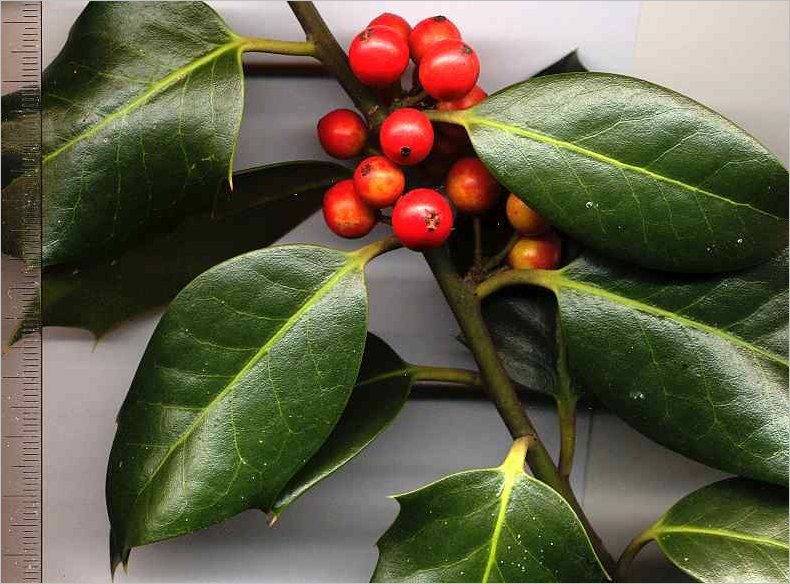
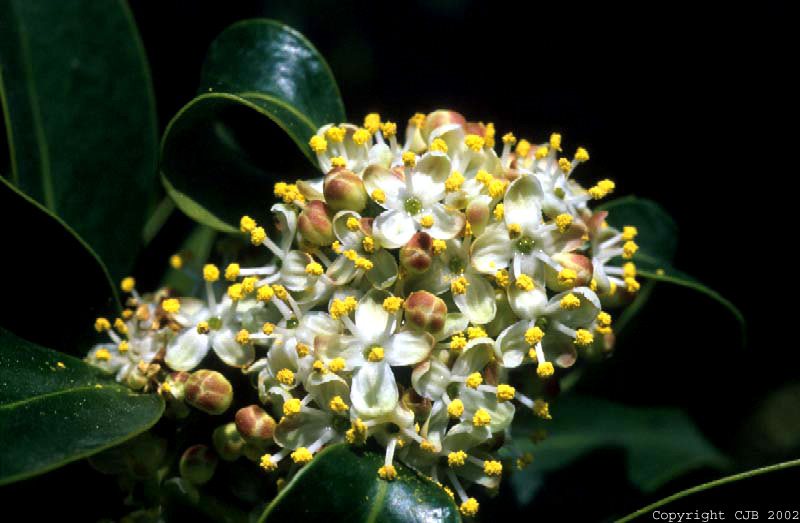
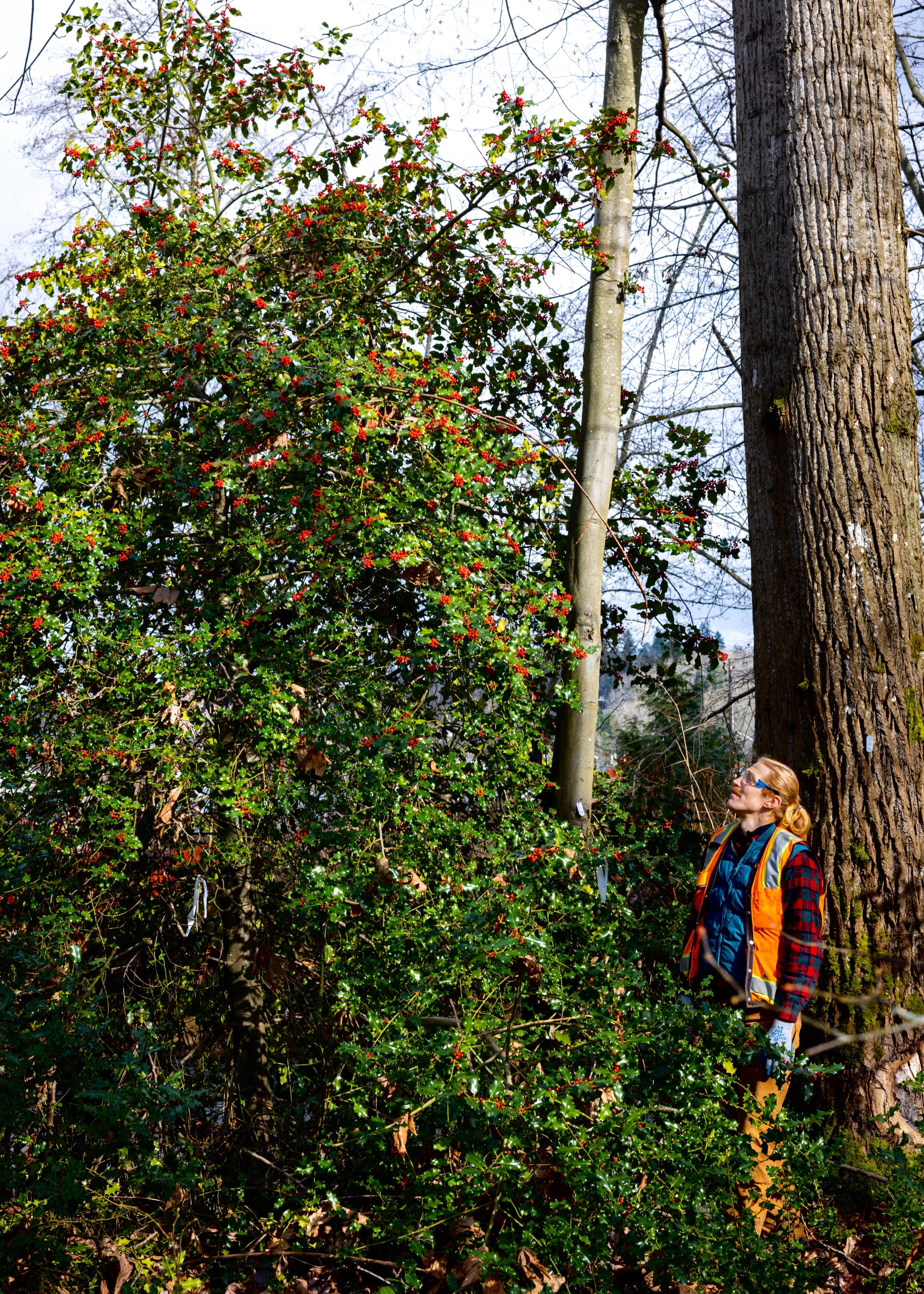
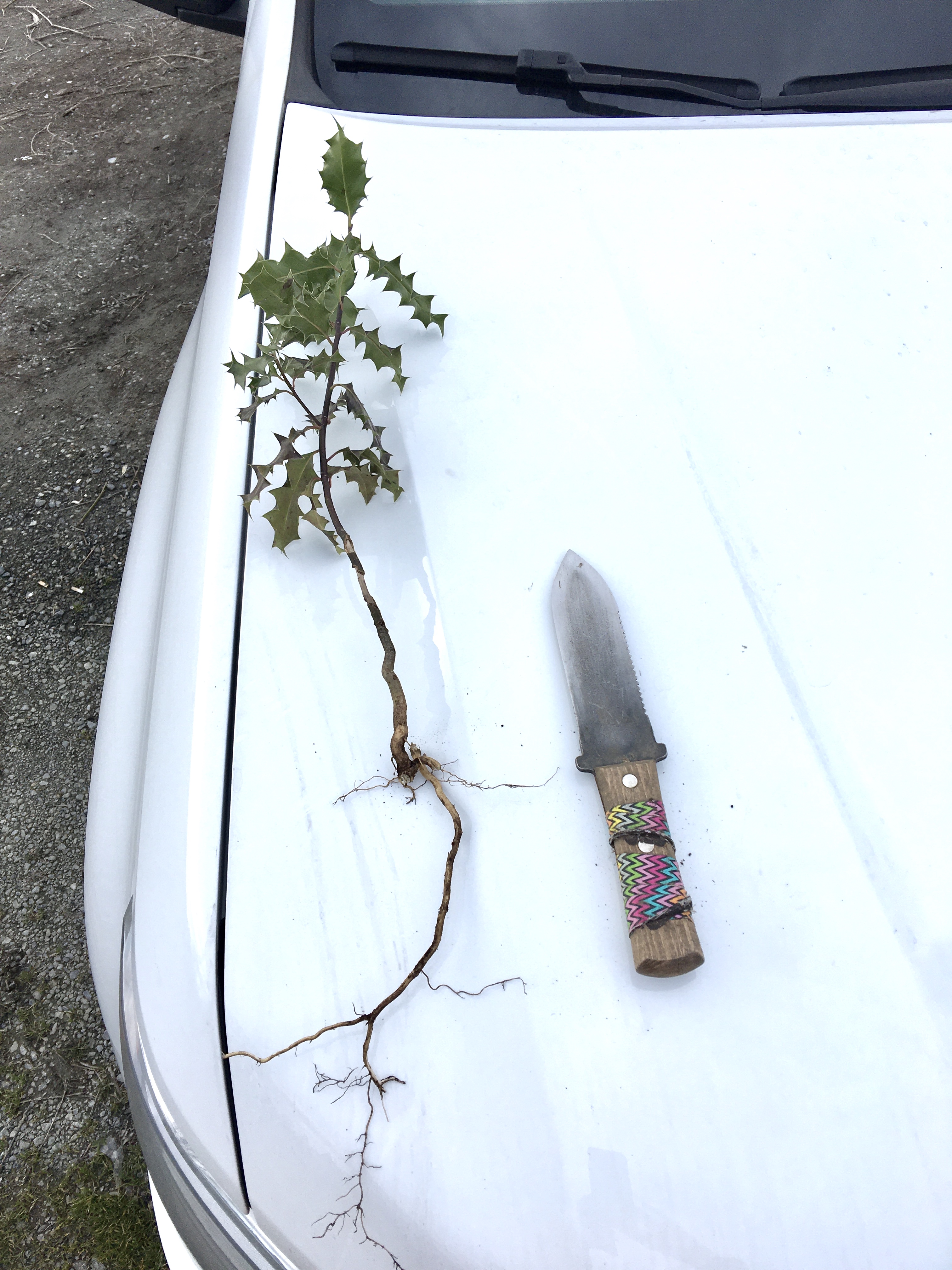
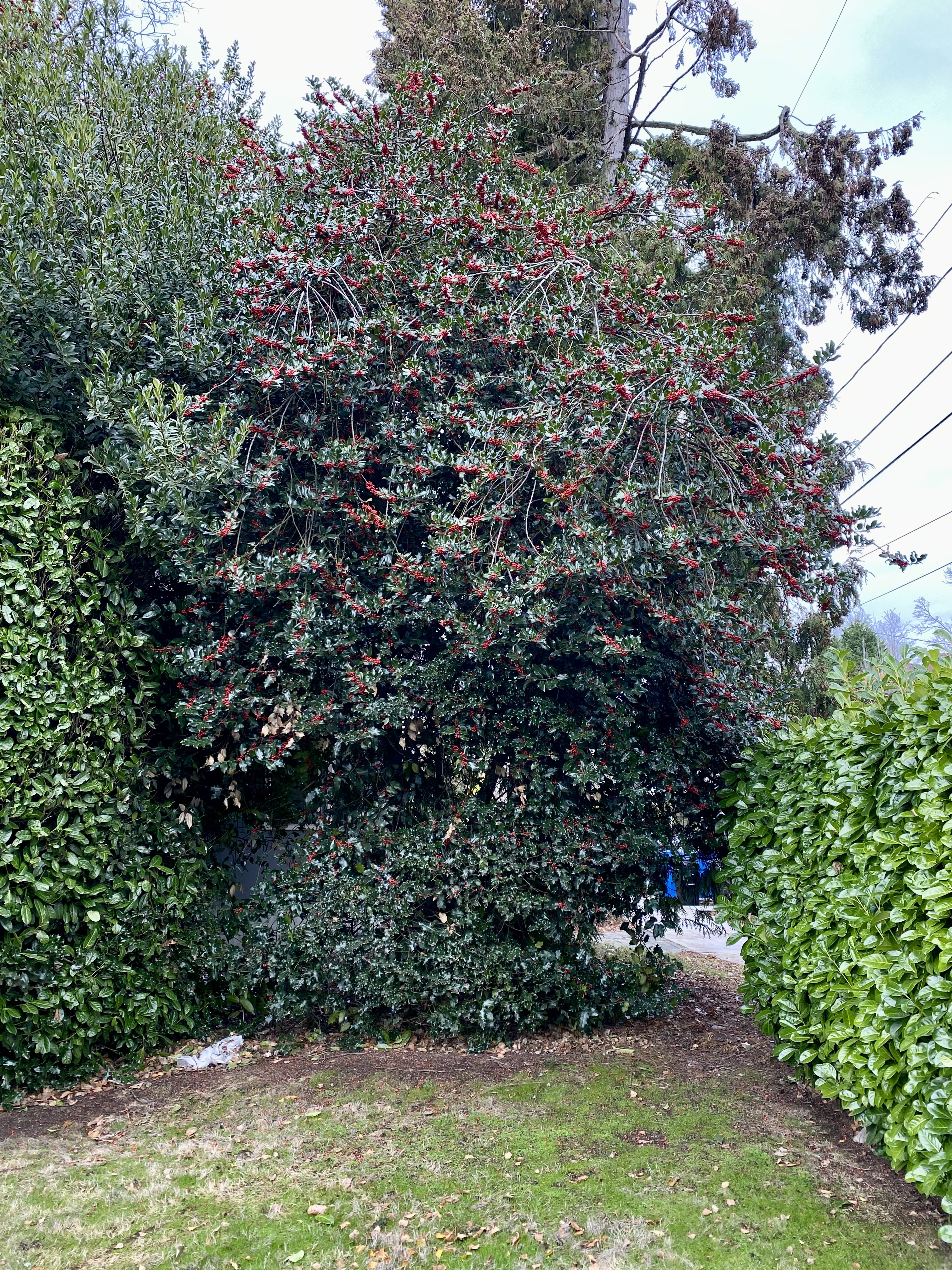
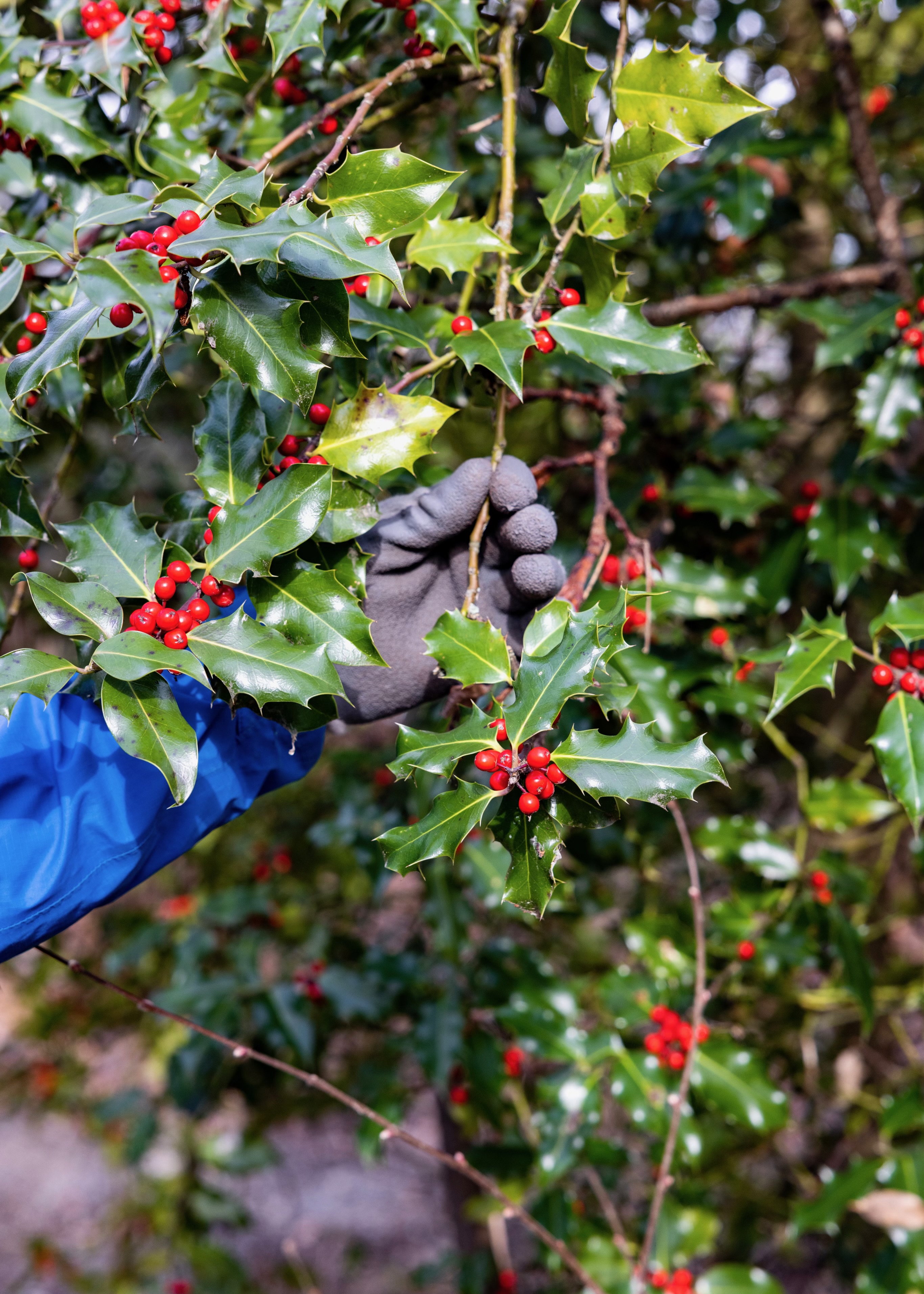
Be aware of look-alike plants
The native plant Oregon grape is often confused with smaller common holly plants.
There are a few key differences to look for. Common holly leaves are alternate (leaves grow staggered, without a pair on the stem). It has red berries in winter and white flowers in spring/summer. Oregon grape leaves are opposite (leaves connect to the stem in pairs). It has blueish-purple berries in summer and yellow flowers in spring. See the two side-by-side below.
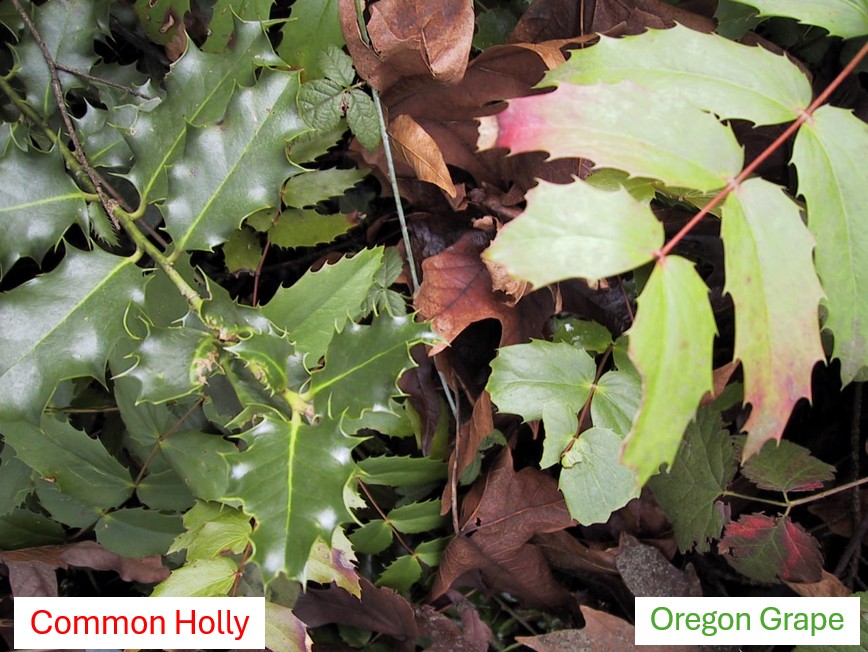
Common holly is also confused with:
False holly, Osmanthus heterophyllus
When in doubt, take photos and report them on iNaturalist.
What to do if you find it
Because common holly is already naturalized in many places in King County, we are not tracking locations. But, if you know of any infested forests, especially outside of the urban growth area, please post it on iNaturalist.
Please see our Report a Weed page for more details.
It is important to stress that common holly is produced and sold in Washington and Oregon. There are no state or countywide regulations or limits on its sale or use in landscaping.
Some cities have more restrictive codes related to invasive plants. If you live in such a city, you should consult them for more information. For instance, the City of Kirkland has a list of plants that are not allowed to be planted on private property, including common holly.
Control methods
We recommend using a combination of methods to control weeds. In areas with few weeds, it is important to act quickly before they become harder to control. Make a long-term plan as it often takes several years to get rid of most weeds. Start in the least infested areas first and then move into more heavily infested areas.
For more in-depth control information read our Best Management Practices for common holly
Manual control
You can pull or dig up seedlings and very small plants. A large weed puller, such as a Weed Wrench or Uprooter type tool, works well for small to medium stems.
Larger trees have deep and extensive roots so digging is labor-intensive. And if you remove all of the roots, considerable soil disturbance can occur.
Cutting common holly at the base usually results in re-sprouting from the crown and side roots, but with monitoring and follow up this can suppress the holly.
Weed Wrenches™ and other tools can be borrowed from Tool Libraries in the region.
Chemical control
Stay safe when using herbicide:
- Always read the label before use.
- Wear a long-sleeved shirt, long pants, shoes, and eye protection.
- Follow state and local regulations.
For common holly trees that are too large to pull or dig up, the most effective method is to apply herbicide to the live wood area of the trunk of actively growing plants.
You can use the cut stump or frilling methods with an herbicide such as triclopyr, imazapyr, or glyphosate. Or you can use an injection lance with imazapyr herbicide bullets. Foliar herbicide treatment is not very effective due to the thick, waxy leaves.
For more information or a site-specific recommendation in King County, contact the noxious weed program. For information in other locations, contact your local weed board or extension office.
Disposal instructions
Common holly branches will form roots if they contact the ground. Pile holly stems on downed logs, brush piles, or other elevated surfaces so stems will dry out.
If creating piles on-site is not an option, dispose of holly stems in yard waste bins or take to a transfer station. Home composting is not hot enough to kill the seeds so composting trees with berries is not recommended.
Because common holly leaves produce a flammable vapor when heated, large piles of holly may pose a fire risk. Avoid leaving large holly piles near structures and monitor any piles left in wooded areas.
Noxious Weed Disposal - Washington State Noxious Weed Control Board

 Translate
Translate